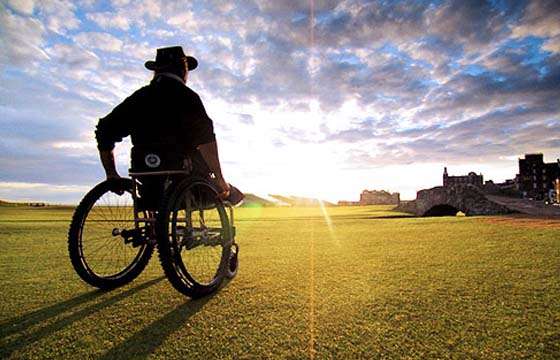Society and Livelihood
- Filter by
- Categories
- Tags
- Authors
- Show all
- All
- Beijing-Shanghai-Guangzhou-Hong Kong Comparative Youth Study Series
- Current Youth Issues - Full Report
- Education and Innovation
- Employment and the Economy
- Journal of Youth Studies - Issue Number
- Latest Events
- Latest News
- Liberal Studies - Research Articles
- Society and Livelihood
- Thematic Issues
- Uncategorized
- Youth Development and Engagement
- youth poll major findings
- Youth Study - Major Findings
- Youth Trends - Year
December 10, 2019
December 10, 2019
Youth I.D.E.A.S. 48 Livelihood Strengthening Intergenerational Understanding 9 December, 2019 A “Generation” refers to a group of people with collective characteristics, who were also born and/or are living within the same time period. The impact of rapid changes in politics, economics, societal and technology would result in the emergence of various cohorts, each with their own individual characteristics and features[1]. Intergenerational relationships are important as every society requires cooperation and interaction between respective generations. Recent social events have triggered vigorous discussions, arguments and sometimes conflict between different generations in Hong Kong. The majority of protesters have […]
Do you like it?
August 21, 2019
August 21, 2019
Youth I.D.E.A.S. 44 Society and Livelihood Co-Living: An Alternative Hong Kong Housing Solution for Youth? 21 August, 2019 Co-living is a modern form of shared housing that combines private living spaces with shared communal facilities. It provides an affordable housing alternative by sharing expenses. The idea of co-living also emphasizes building up interpersonal networks and promoting social contact through community events. The earlier form of co-living originated from Denmark’s co-housing projects in the 1970s. This extended gradually to The Netherlands and onto the UK. In recent years, it can be seen throughout the US, across Europe, […]
Do you like it?
March 28, 2019
March 28, 2019
Youth I.D.E.A.S. 40 Society and Livelihood Stepping up Efforts in Reducing and Recycling Waste in Hong Kong 28 March, 2019 The quantity of Municipal Solid Waste (MSW) in Hong Kong has increased more than 40% over the past 26 years, from 2.7 million tonnes in 1991 to 3.92 million tonnes in 2017, (According to the Environmental Protection Department’s report “Monitoring of Solid Waste in Hong Kong – Waste Statistics for 2017”). The amount of waste has subsequently caused growing concern and increased awareness amongst the general public. This is especially so due to the harmful effects of […]
Do you like it?
November 27, 2018
November 27, 2018
Youth I.D.E.A.S. 36 Society and Livelihood Enhancing Career Opportunities for Higher Educated Youth with SEN or Disabilities 27 November, 2018 Under the Education Bureau’s Integrated Education Policy, the term “special educational needs” (SEN) refers to students who have learning problems or disabilities, including specific learning difficulties, intellectual disability, autism spectrum disorders, attention deficit/hyperactivity disorder, physical disability, visual impairment, hearing impairment, speech and language impairments, and mental illness. Under the Hong Kong Rehabilitation Programme Plan, the categories of disability also include all of the types of SEN mentioned above. Students with SEN may also be known as […]
Do you like it?
July 26, 2018
July 26, 2018
Youth I.D.E.A.S. 32 Society and Livelihood Boosting Birth Rate in Hong Kong 26 July 2018 With the Baby Boomer generation entering old age, Hong Kong is currently experiencing a rapidly aging population. In 2016 there were 1.16 million people aged over 65 and this is expected to double to 2.37 million by 2036. The elderly dependency ratio is also expected to double to 527 in 2036, compared to 231 in 2016. As well as longer lifespans, a low birth rate is also contributing to Hong Kong’s aging population. According to the World Bank, Hong Kong’s fertility rate […]
Do you like it?
February 11, 2018
February 11, 2018
Youth I.D.E.A.S. 28 Society and Livelihood Promoting Organ Donation in Hong Kong 11 February, 2018 Every day, over 2,000 patients in Hong Kong are waiting for an organ transplant to extend their lives. However, the organ donation rate in Hong Kong is currently amongst the lowest in the world at 6.3 donors per million people, seven times lower than that of Spain in 2016. Some Hong Kong patients even die whilst waiting for an organ transplant. Hong Kong has long maintained a policy of ‘voluntary organ donation’. Under this mechanism, everyone can register themselves on the Centralised […]
Do you like it?
May 31, 2017
May 31, 2017
Youth I.D.E.A.S. 22 Society and Livelihood How Young People Cope with Stress 31 May, 2017 Adolescence is a time of change and uncertainty: biological, psychological, emotional, and behavioral. In a highly competitive society like Hong Kong’s, many adolescents experience stress, often exacerbated by personal, familial, and social factors. How young people cope with stress is therefore worthy of investigation. According to the World Health Organization (WHO, 1948), “Health is a state of complete physical, mental and social well-being and not merely the absence of disease or infirmity.” In other words, in addition to keeping a […]
Do you like it?
January 24, 2017
January 24, 2017
Youth I.D.E.A.S. 18 Society and Livelihood Youth People’s Views on “Hong Kong 2030+” 24 January, 2017 Hong Kong is an international metropolitan city in Asia. Urban planning and strategic development play a critical role in continuing to make the city more liveable. Good future development of the city depends on whether it has appropriate and forward-looking urban planning. “Hong Kong 2030+: Towards a Planning Vision and Strategy Transcending 2030” (hereinafter referred to as “Hong Kong 2030+”), a vision-driven, pragmatic and action-oriented strategic plan, was released by the Development Bureau and Planning Development in October 2016. It […]
Do you like it?
September 27, 2016
September 27, 2016
Youth I.D.E.A.S. 14 Society and Livelihood Challenges Faced by Ethnic Minorities in Hong Kong 27 September, 2016 Hong Kong is a multicultural society. According to the 2011 population census, a total of 192,400 people from ethnic minorities were living in Hong Kong. Of these people, 61,400 were South Asians, which is the largest ethnic group in Hong Kong, constituting 31.9% of the ethnic minority population. The growth rate of the ethnic minorities’ population is higher than that of Hong Kong as a whole, and this population is relatively young. Ethnic minorities make up an important part of […]
Do you like it?










